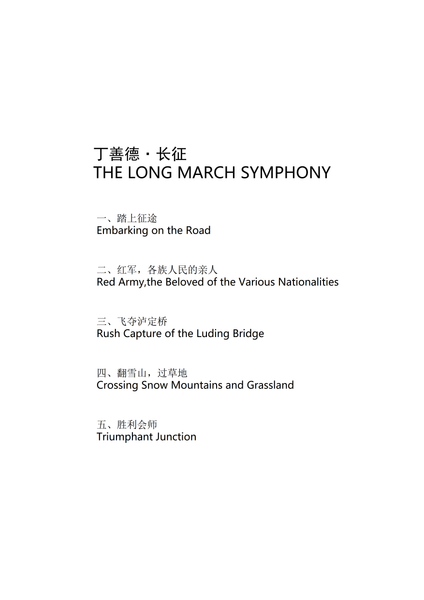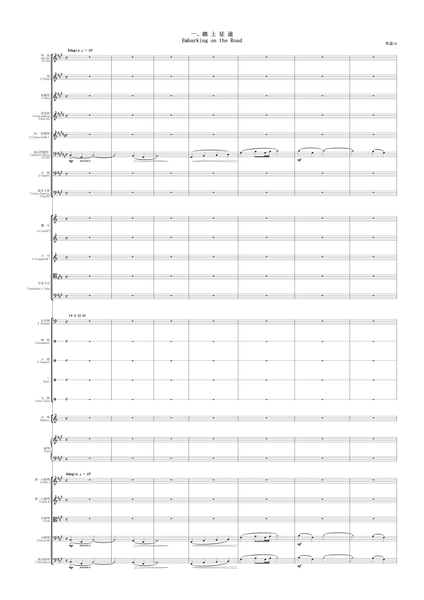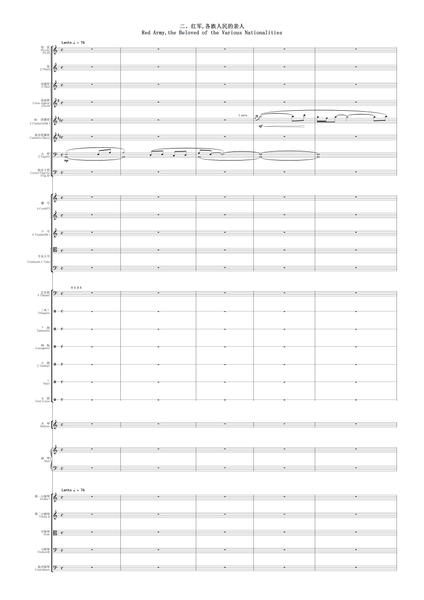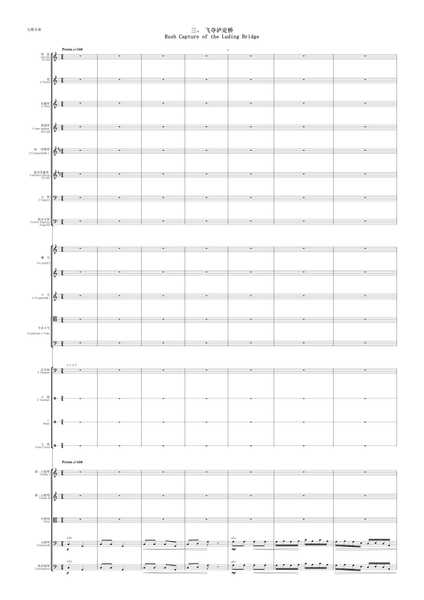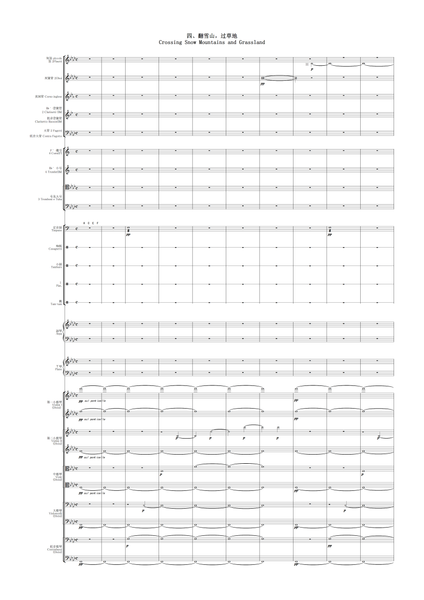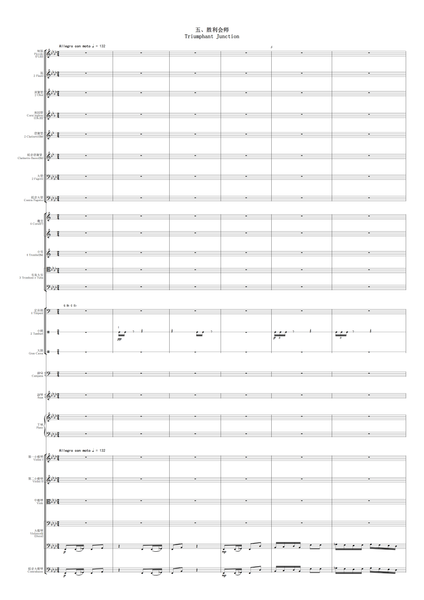Ding Shande: The Long March Symphony 丁善德: 長征交響曲 – full score (NXP039)
Sheet music edition. Choose your format from the selection above.
Instrumentation: 3d1. 3d1. 3d1. 3d1 - 4.4.3.1 - timp - perc. (tri., tamb., cas., cymb., 2 x Sn.Dr., B. Dr., tam-t., xyl., bells) - hp - str.
315 pages
Audio sample
The Long March was the strategic transfer of the Chinese Workers’ and Peasants’ Red Army in the Second Revolutionary Civil War from their base areas south and north of the Yangtse River to an area in North Shaanxi. This transfer began with strategic action by the Sixth Central Red Army in the Hunan-Jiangxi base area in August 1934 and by the Central Red Army in October the same year, and ended with the meeting of the First, Second and Fourth Front Armies in Huining, Gansu, in 1936. The difficulties and dangers that the Red Army underwent and the heroism displayed by the soldiers during the 25,000 li course of the march amazed the whole word and aroused universal admiration. It was the victory of the Long March that opened up the prospect of the Chinese Revolution.
Ding Shande’s Long March Symphony, Opus 16, is in five movements. The composer began the work in 1959 and by 1961 had finished the first three movements, which were performed at the Second Shanghai Spring Music Festival in the same year. In 1962 he completed the whole work, which was performed in its entirety at the Third Shanghai Spring Music Festival. For the composition of the symphony the composer made a special tour to Jiangxi, Guangxi, Guizhou, Sichuan and other provinces, from the winter of 1958 to the spring of 1959, studying the terrain through which the marchers passed and gathering musical materials for his symphony.
Ding Shande (丁善德) (1911–1995)
A Chinese composer and teacher, Ding Shande was born in Kunshan, Jiangsu, in 1911. Nurtured on folk music, he began to study the pipa when he was a child.
In 1928, he entered the Shanghai School of Music, studying the pipa and the piano. He then went on to major in the piano and, at the same time, studied composition with Huang Zi. After the War of Resistance against Japan, he established the Shanghai Music Society, took charge of its administration and pursued his musical education.
In 1947, he entered the Paris Conservatoire, studying composition with Boulanger. After returning to China in 1949, he worked for many years as Deputy Director of the Shanghai Conservatory and Dean of the Composition Department. Many celebrated musicians, such as pianists Zhu Gongyi and Zhou Guangren, harmonica-player Huang Qingbai, composers Zhou Wenzhong, Chen Gang and Wang Ming are his students. Besides, he has often been invited as a member of the jury for various international piano competitions.
His representative works include the symphony Long March, the symphony suite New China, the cantata Ode to the Huangpu River, the piano pieces Children Suite, First Xinjiang Dance and Second Xinjiang Dance, Symphony Overture, Piano Trio in C major, Piano Concerto in B-flat major, the symphonic poem Spring and the song cycle A Copy of West Yunnan Poetry.
Ding Shande died in 1995







